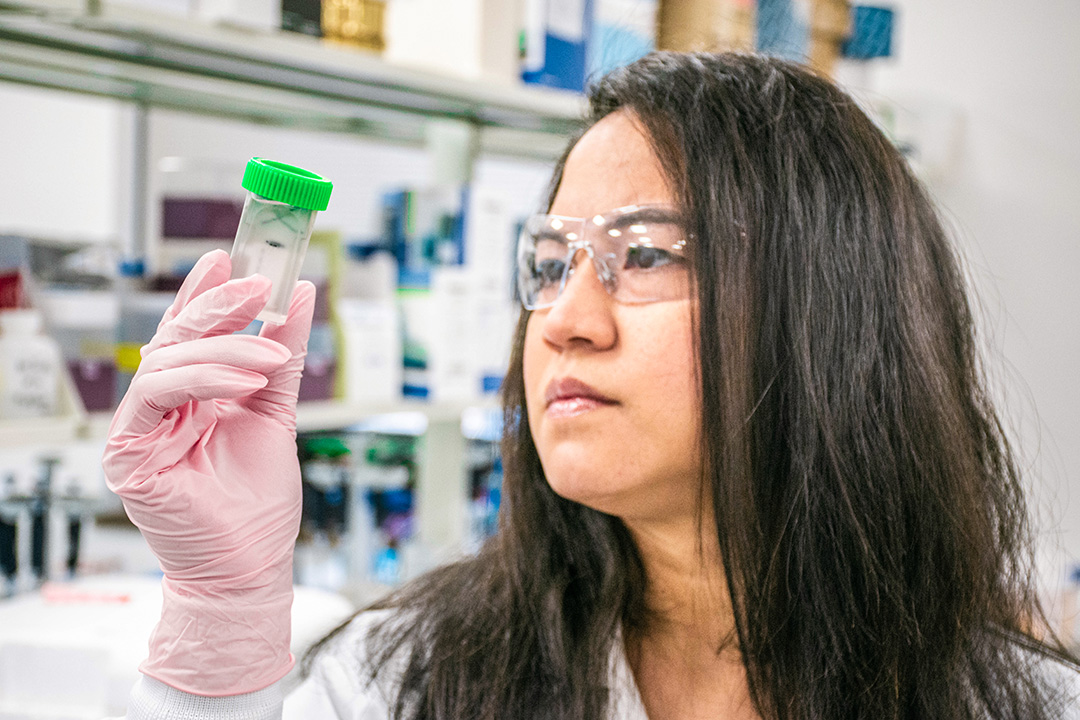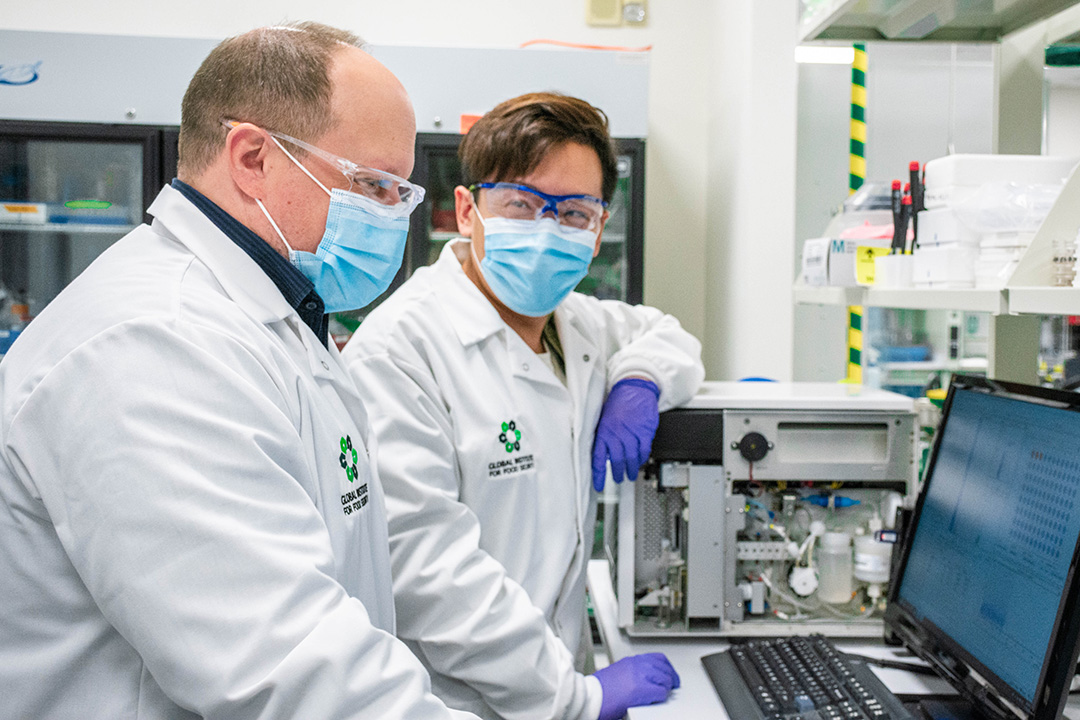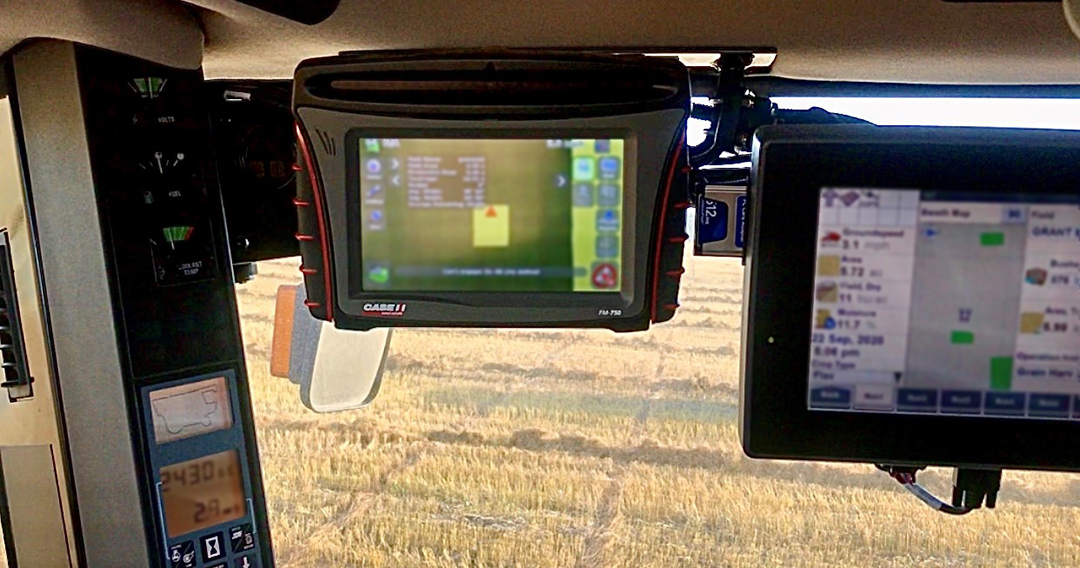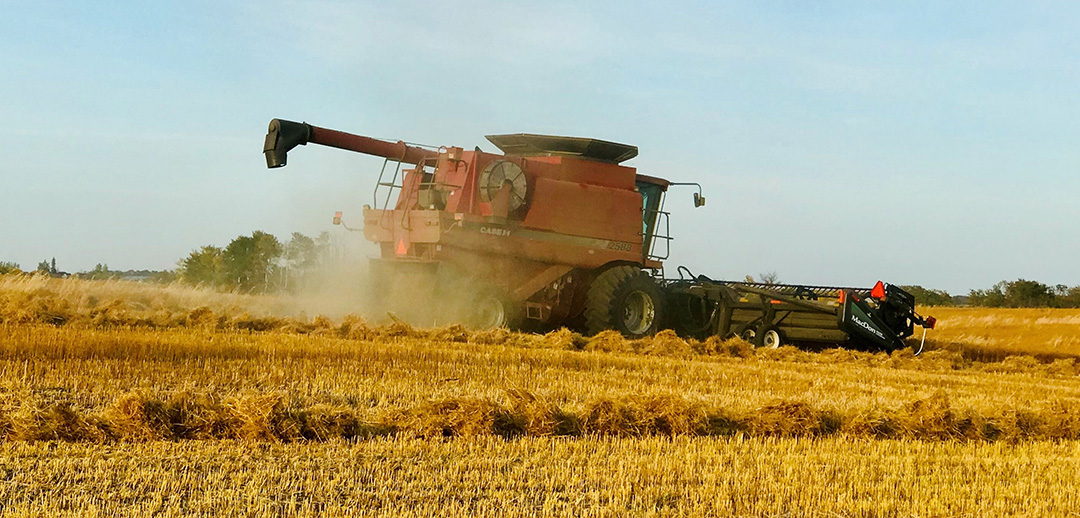
Innovation to feed a post-pandemic world
World Food Day on October 16 is traditionally a time to shine the spotlight on global hunger and poverty and inspire innovative solutions for world change.
By Olufunke OkochiIt’s a challenge the Global Institute for Food Security (GIFS) at the University of Saskatchewan (USask) was designed to meet.
With the world still dealing with the effects of a global pandemic that has disrupted many food systems—including processing plant shutdowns that led to an oversupply of livestock on farms and meat shortages in grocery stores—GIFS researchers are committed to international collaboration and innovation to address the challenges facing agriculture production worldwide.
“At GIFS, our vision is a world where everyone has access to safe and nutritious food,” said Dr. Steven Webb (PhD), GIFS’ chief executive officer. “It’s a bold vision, but we’re guided by our mission to work with partners to discover, develop and deliver innovative solutions for the production of globally sustainable food.”

This year’s World Food Day—featuring the theme Grow, Nourish, Sustain, Together—marks the 75th anniversary of the Food and Agriculture Organization of the United Nations (FAO), an organization committed to finding new ways to feed a growing global population.
The FAO notes that “preserving access to safe and nutritious food is and will continue to be an essential part of the response to the COVID-19 pandemic.” The international body also highlights the need for innovative solutions to help countries recover and make food systems more resilient and resistant to shocks.
This call for innovative solutions aligns directly with GIFS’ mission and USask’s signature area of research. Founded in 2012, GIFS is committed to using innovation to address challenges facing agriculture production.
While the global population is expected to reach almost 10 billion by 2050, simply producing more food isn’t enough to feed a growing world. According to the FAO, more than enough food is produced to feed everyone; however, the imbalance with food systems and challenges such as COVID-19, climate change, and limited water, land and other resources, need to be addressed.
“We need a resourceful food production system that’s sustainable—that can thrive in different economic, environmental and social conditions,” said Webb. “This sustainability isn’t possible without innovation and new agricultural technologies.”

Saskatchewan has an agricultural technology (agtech) advantage, as it is home to about 30 per cent of this industry in Canada. The USask campus offers one of the world’s largest clusters for agri-food and bioscience—including the Crop Development Centre, the College of Agriculture and Bioresources, the Global Institute for Water Security (GIWS), and many more. The university also ranks first in water resources research in Canada, and is a global leader in sustainability and in agriculture and food security.
GIFS collaborates with diverse partners including industry, government, producers and researchers, on innovative agtech to accelerate plant breeding, enhance digital agriculture, increase quality crop yield, and build plant resilience to climate change.
An example of this collaboration is the Omics and Precision Agriculture Laboratory (OPAL) managed by GIFS. OPAL was founded by Agriculture and Agri-Food Canada, the National Research Council of Canada and USask, with a strategic investment from Western Economic Diversification Canada.
The first of its kind in Canada, OPAL combines the digital data analyses of plant genes and traits with the latest precision agtech to improve crop yield, profitability and sustainability in the agri-food sector.
“OPAL is a one-stop-shop for plant analyses at the molecular level, and we’re excited to have these high-tech services right here at USask, supporting Saskatchewan’s rich biotechnology ecosystem,” said Peta-Gaye Burnett, OPAL platform leader at GIFS. “Through OPAL, Saskatchewan’s agri-industry now has proximity to Canada’s most integrated omics and precision agriculture facility to analyze crop data.”
Using some of the latest in agtech, OPAL combines global positioning systems, remote aerial imaging, unmanned aerial vehicles and in-field environmental monitoring—with digital DNA sequence information—to provide a complete profile of plant samples. The versatile equipment can also analyze animal and human samples.
“OPAL’s detailed plant analyses will help farmers target their crops with the right amounts of water, fertilizers and pesticides, rather than uniformly spraying these products across their fields,” said Burnett, a USask alumnus. “This precision in agriculture means a more efficient use of resources and reduced environmental impact, leading to accelerated crop breeding, less waste, and increased efficiency for breeders, agronomists, producers and other stakeholders.”
Though its hard launch isn’t until January 2021, OPAL is already operational, providing bioinformatics and long- and short-read genetic sequencing services to clients.
“We’re open for business and eager to provide unparalleled satisfaction serving clients within and outside our campus community,” said Burnett.

GIFS is part of another agtech collaboration, a new $26.2 million Protein Industries Canada (PIC) partnership that’s developing technology to help lower pesticide use across Canada. The project involves using artificial intelligence (AI) to detect weeds and other crop pests, so they can be targeted directly with pesticides. The AI technology is estimated to reduce pesticide use by up to 95 per cent while maintaining crop yield, saving farmers about $52 per acre per growing season.
Roughly 120 Canadian jobs are expected to be created as a result of this project led by Precision.ai Inc., Sure Growth Solutions Inc., Exceed Grain Marketing, and GIFS. The partners are together investing $13.4 million in the project, with PIC investing the remaining $12.8 million.
“At GIFS, we believe that with collaboration and commitment, innovative agtech can help build sustainable food security. However, there needs to be structure to guide the extensive validation of the technologies before they can be successfully deployed as innovative agriculture solutions,” said Webb.
“By working together with diverse stakeholders and continued investments in research and development, we can advance and accelerate agtech’s use as a valuable tool that enables sustainable access to safe and nutritious food in Saskatchewan, across Canada and everywhere in the world where the technologies are deployed.”

